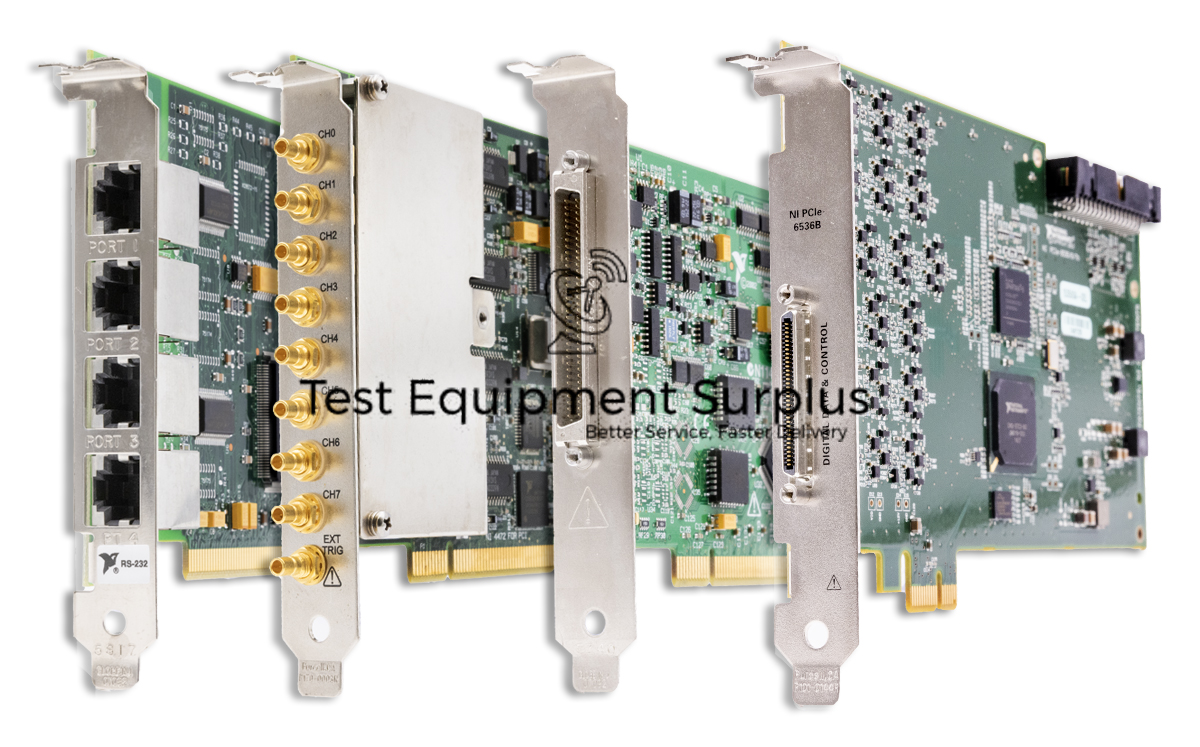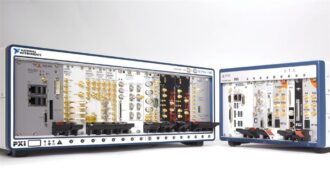Description
The National Instruments PCI-8517/2 FlexRay Interface Device, with its part number PCI-8517/2, is equipped with 2 ports and utilizes a NI-XNET FlexRay interface type. This device features TJA1080 transceivers and supports programming with LabVIEW, LabWindows/CVI, and C/C++ software.
Designed for the NI-XNET platform, the PCI-8517/2 is optimal for various applications, including automation control, hardware-in-the-loop simulation, bus monitoring, and rapid control prototyping. Its synchronization capabilities are robust, offering external sync connectors and precise 1 µs timestamps.
Connectivity options include a 9-pin male D-SUB I/O connector for both ports and an SMB jack sync connector. The device also features 2 input/output front panel sync connectors, 7 input/output trigger lines, and 1 input/output clock line. When powered on, its state is Input (High-Z), ensuring readiness for integration.
Even though its obsolete status has been announced by National Instruments, the PCI-8517/2 remains available for purchase and repairs through Apex Waves.
| Specification | Detail |
|---|---|
| Product Part Number | PCI-8517/2 |
| Description | National Instruments PCI-8517/2 FlexRay Interface Device |
| Number of Ports | 2 |
| Interface Type | NI-XNET FlexRay |
| Transceiver | TJA1080 |
| Supported Software | LabVIEW, LabWindows/CVI, C/C++ |
| Platform | NI-XNET |
| Applications | Automation control, hardware-in-the-loop simulation, bus monitoring, rapid control prototyping, etc. |
| Sync Capabilities | External sync connectors, 1 µs timestamps |
| Connectors | 9-pin male D-SUB I/O connector for both ports, SMB jack sync connector |
| Front Panel Sync Connectors | 2 input/output |
| Trigger Lines | 7 input/output |
| Clock Line | 1 input/output |
| Power-On State | Input (High-Z) |
| Obsolete Status | Announced by National Instruments, available for purchase and repairs by Apex Waves |
Question 1: What programming languages and environments are supported by the National Instruments PCI-8517/2 FlexRay Interface Device for application development?
Answer 1: The obsolete National Instruments PCI-8517/2 FlexRay Interface Device supports synchronization with external sync connectors and precise 1 µs timestamps, and it can still be purchased and repaired through Apex Waves despite its discontinued status.
Question 2: What programming languages are supported by the National Instruments PCI-8517/2 FlexRay Interface Device for developing applications such as automation control and hardware-in-the-loop simulation?
Answer 2: The National Instruments PCI-8517/2 FlexRay Interface Device supports application development in programming languages and environments such as LabVIEW, LabWindows/CVI, and C/C++.
Question 3: How does the obsolete National Instruments PCI-8517/2 FlexRay Interface Device support synchronization, and where can it still be purchased despite its discontinued status?
Answer 3: The National Instruments PCI-8517/2 FlexRay Interface Device features 2 ports with TJA1080 transceivers, supports LabVIEW, LabWindows/CVI, and C/C++ programming, and offers robust synchronization with external sync connectors and precise 1 µs timestamps. It is designed for applications such as automation control, hardware-in-the-loop simulation, bus monitoring, and rapid control prototyping. Despite its obsolete status, it can still be purchased and repaired through Apex Waves.
Question 4: What are the features and applications of the National Instruments PCI-8517/2 FlexRay Interface Device, and where can it still be purchased and repaired despite its obsolete status?
Answer 4: The National Instruments PCI-8517/2 FlexRay Interface Device features 2 ports with TJA1080 transceivers, supports programming with LabVIEW, LabWindows/CVI, and C/C++, and is designed for applications such as automation control and hardware-in-the-loop simulation. Its connectivity options include a 9-pin male D-SUB I/O connector for both ports, an SMB jack sync connector, and additional sync and trigger lines. Despite its announced obsolete status by National Instruments, the device
Question 5: What are the features and connectivity options of the National Instruments PCI-8517/2 FlexRay Interface Device, and how does its obsolete status affect its availability for purchase and repairs?
Answer 5: The National Instruments PCI-8517/2 FlexRay Interface Device supports programming with LabVIEW, LabWindows/CVI, and C/C++ for developing applications such as automation control and hardware-in-the-loop simulation.



